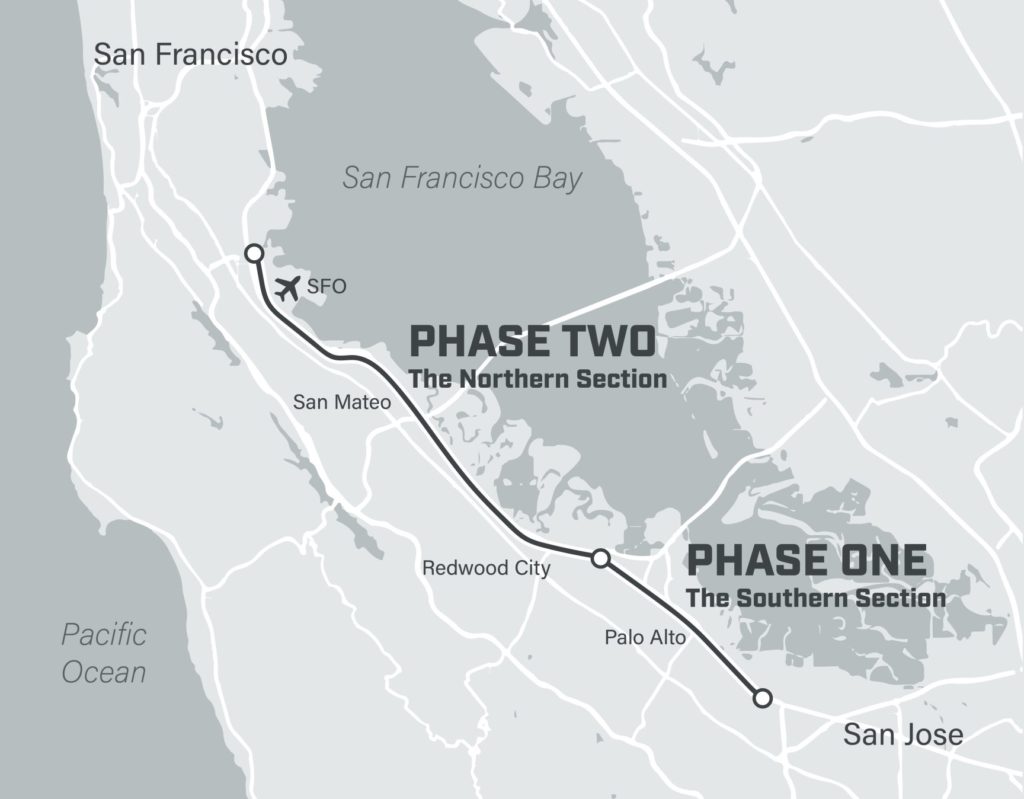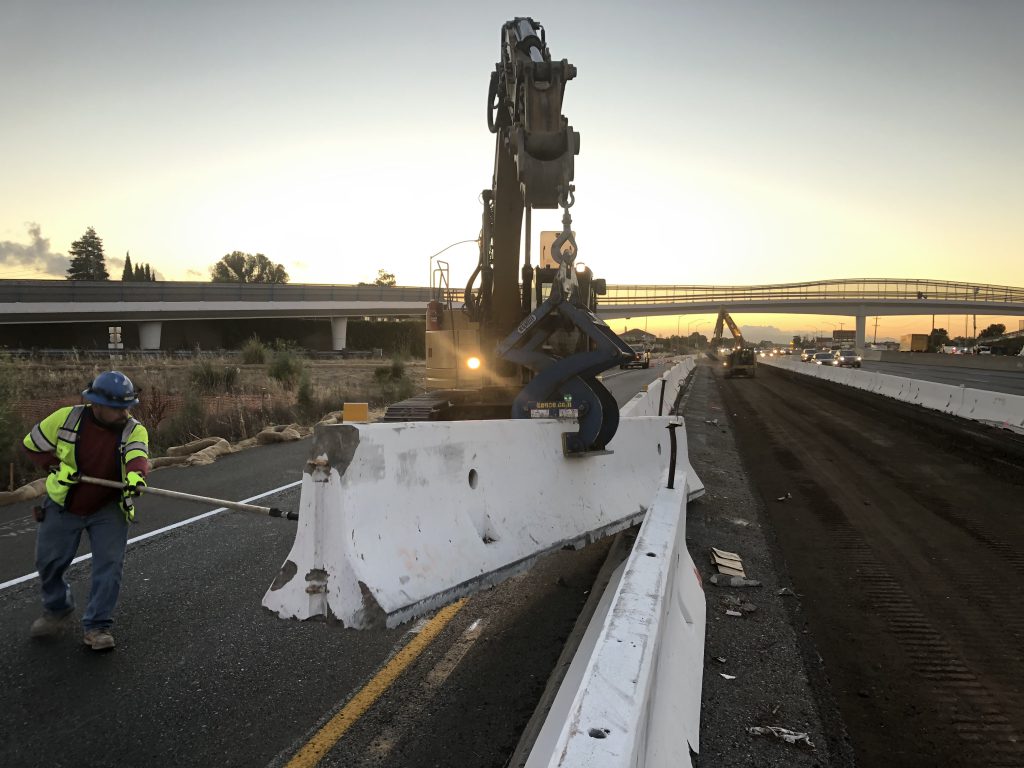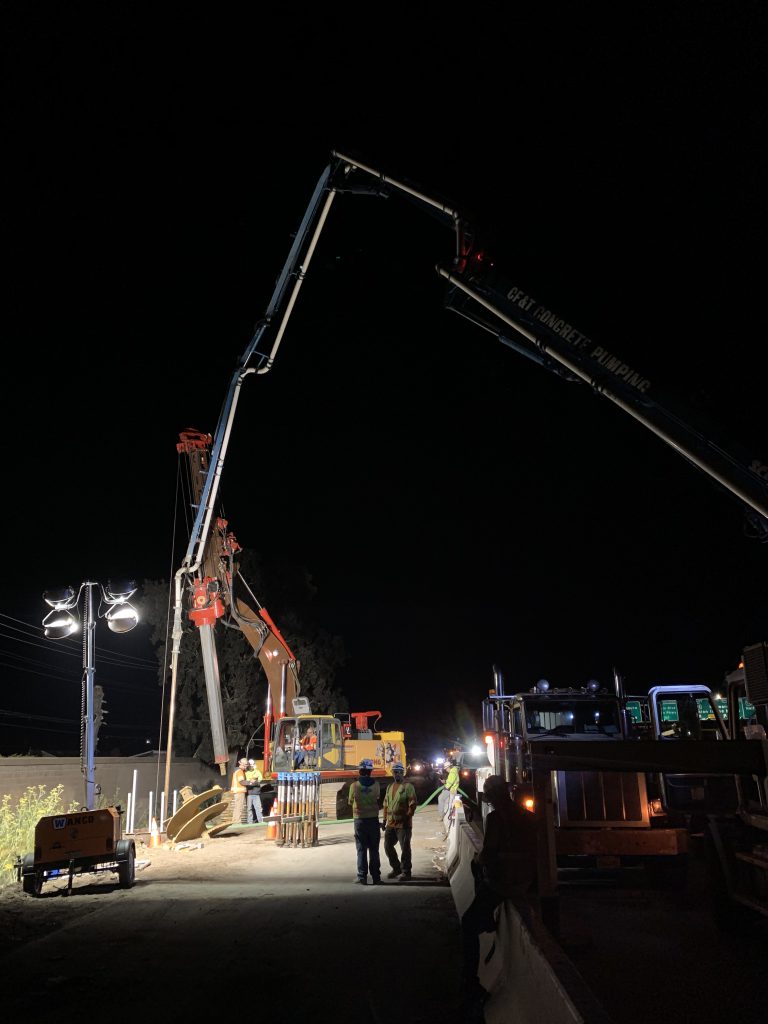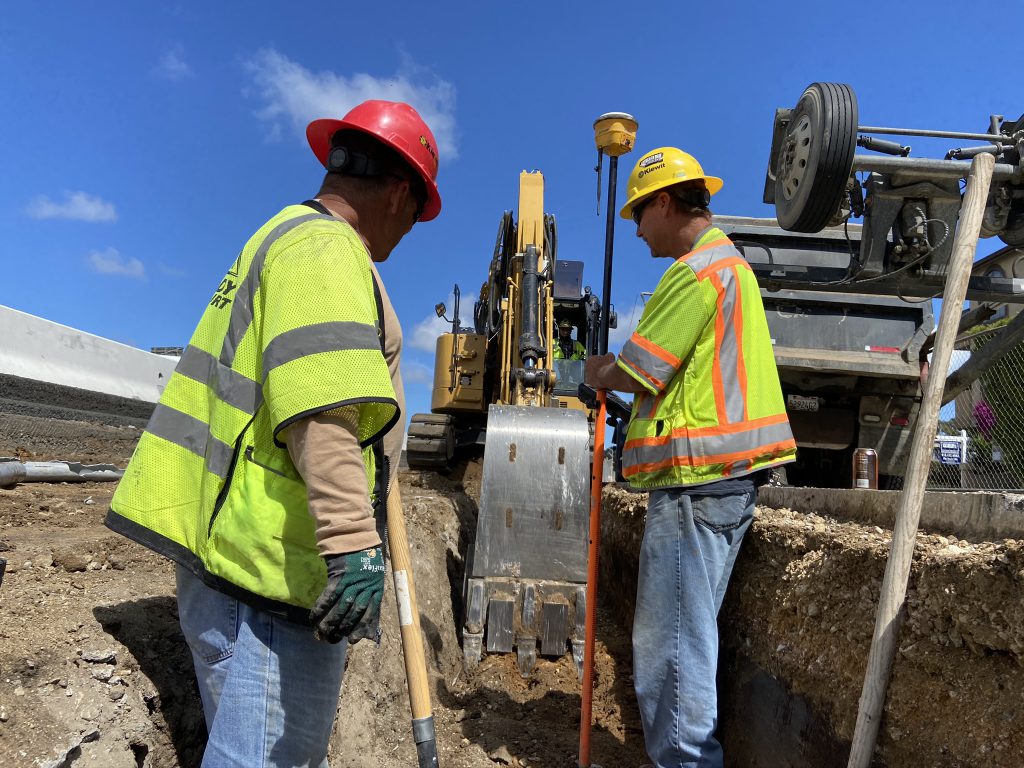One thing all drivers try to avoid is getting caught in a traffic jam. Unfortunately, it’s been all too common for Bay Area drivers commuting to and from Silicon Valley or headed to the San Francisco Airport.
The Bay Area, stretching from San Francisco to San Jose, is home to a booming economy, but outdated highway infrastructure in the area created congested traffic on U.S. 101. The San Mateo 101 Managed Lanes project team, led by Kiewit Infrastructure West Co., has been working around the clock to get these drivers out of a jam.
The project will create a managed lane system, including express lanes in each direction, to lessen congested traffic along 22 miles of highway. These express lanes give drivers incentive to carpool or use public transit systems, since vehicles with three or more passengers have free access to the express lanes.
Kiewit won the contract in the spring of 2018 based on qualifications as the best value contractor for the Construction Manager/General Contractor (CMGC) contract. The CMGC project delivery method allowed Kiewit to integrate early on with the client, California Department of Transportation (Caltrans), District 4.
“Caltrans’ design team and Kiewit’s construction operations and estimating teams began working immediately to maximize the client’s budget and schedule,” said Mike Lowe, Kiewit area manager. “During this pre-construction work between Caltrans and Kiewit, the focus was on budget and schedule to provide the best project outcome for the client.”
“We have had great success as evidenced by the progress we have had on this project — on schedule, within scope, great work quality and no major safety incidents — this being one of the largest projects for the California Department of Transportation, District 4,” said Bonny Nyaga, California Department of Transportation, District 4, Division Chief.
The San Mateo County Transportation Authority’s (SMCTA) tolling integrator was also engaged in the early design phase to ensure seamless integration with its systems. The toll systems and continuous road maintenance will be managed after project completion by SMCTA and the City/County Association of Governments (C/CAG).
“We got involved with client relations right off the bat,” said Kevin Young, Kiewit project manager. “We were embedded with Caltrans in their office, working with them on pricing different iterations of the design, and we carried that relationship through construction.” This partnership was foundational to building open communication lines and trust throughout some of the project’s challenging aspects and allowed for a game-changing early work package.
As part of the early work package, the south segment of the project began in spring 2019. During this phase, the team converted 8 miles of existing carpool lanes to express lanes, placed 28 miles of electrical conduit and 2 miles of concrete barriers, and installed 26 overhead signs and 17 miles of fiber optic cable. This work schedule allowed the tolling integrator to complete its work early and meant the state could begin collecting toll revenue on this portion of the highway while the north segment remained under construction. Tolling of the south segment began in February 2022, ten months ahead of the north segment.
While construction was underway on the south segment, Kiewit continued to support Caltrans in the pre-construction and design effort for the north segment of the project. Construction on the north segment began
in 2020. The north segment’s design included construction of 16 miles of express lanes in each direction, replacement of 2 miles of sound walls, utility work that stretched through multiple municipalities and sewer work with very limited access.

Day and night
With 280,000 vehicles traveling this stretch of highway daily, it came as no surprise that work crews would be challenged with scheduling around the daily rush. Due to the lighter traffic and ability to close more lanes at night, approximately 95% percent of the work was completed in the dark.
“We built work during the day, but our primary focus was to do everything we could to make sure the night shift was set up for success,” said Construction Manager Jeff Ford. One of the biggest concerns at night was keeping workers protected from traffic.
Blocker vehicles or K-rails were placed as protective barriers against potential accidents on the open lanes. Additionally, traffic was monitored and speeding in work zones was deterred through coordination with California Highway Patrol.
During the day, the team worked primarily on city streets. The project scope included deep utility relocations, installation of sound walls and on- and off-ramp work.
“We had a one-team mentality there,” said Young. “It was nice to come to work when everybody was striving for the same goal and working together really well.”
It was not uncommon to see employees on-site before or after their shifts, going over the next day’s plan. “It took some long hours from everybody, but I would say that was key to having good coordination between the two shifts,” said Young.
The team had to adapt and remain flexible during the four-year project timeline. During the pandemic, many companies encouraged employees to work from home, lessening daily traffic on SM 101. Kiewit took this opportunity to extend lane closure times and get ahead of schedule. Likewise, when wildfire risk caused shutdowns and other construction in the area required schedule flexibility, Kiewit delivered solutions to complete the project.
“It was a great success overall,” said Nidal Turqan, California Department of Transportation, District 4, Division Chief. “The effort between the project team, our partners, SMCTA, C/CAG and Kiewit as the contractor, all worked in a great rhythm. There were many stressful moments but the harder the situations were, the stronger and more creative the team became.”
Driving home the basics
Because of the high cost of living, it can be challenging to find workers in the Bay Area for projects of this magnitude. The need to develop a strong workforce became clear early on.
“One of the real successes of the project was the number of foremen we were able to hire and train to become key foremen,” said Ford.
On a fast-paced project like this one, driving home the basics was key to creating an efficient workflow. Safety practices, streamlined communication and implementation of best practices from day one helped set the team up for success, not only on this site, but for future projects.
“I’ve worked on a lot of different projects and a highway project like this one really sets the tone for coordination efforts,” said Ford. “I think work like this will prepare workers for any type of work that they might encounter in the future.”
The SM 101 Managed Lanes project will be completed in late 2022. The new road system is expected to cut commute times significantly, making every minute and every mile count.





